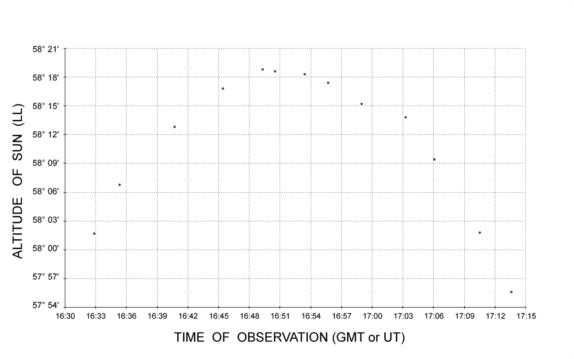
NavList:
A Community Devoted to the Preservation and Practice of Celestial Navigation and Other Methods of Traditional Wayfinding
From: Frank Reed
Date: 2019 May 7, 10:34 -0700
Correct: you only need to apply altitude corrections for the actual peak altitude.
Correct: you do not need to worry about motion east-west. Note that here are a variety of ways to deal with vessel motion for sights around noon.
Jim Wilson's approach to this was unique and perhaps un-necessarily opaque. The process here is just an implrementation of the usual procedure for getting latitude and longitude by sights "around" noon. You have to worry about vessel motion (north-south motion), and you have to worry about a method for getting the time of meridian passage.
It's not "really" a single-body fix anymore than any running fix of Sun sights is a single-body fix. If I take a sight of the Sun an hour before, another right at high noon (LAN), and then a third an hour after noon and combine them using standard line of position techniques, that's fundamentally equivalent. Of course the big advantage of any of these methods with sights right around noon is that they can be worked out with minimal tables and very basic math.
I teach a version of this methodology (not using JW's system) in my "Introductory Celestial Navigation" class. It's easy both conceptually and in practical terms. Another version of this approach can be found in Hewitt Schlereth's little book Latitude & Longitude by the Noon Sight, published some 37 years ago! Used copies of this book are not difficult to find online.
So how do you find the axis of symmetry of a "noisy parabola" of sights around noon? I recommend plotting them on thin graph paper and folding the paper in half aligning the before and after sides by holding the paper up to a bright light (or the Sun). Fast and effective.
Frank Reed







